Mending and repairing were everyday activities when I was growing up. I remember my mum darning socks and jumpers, shortening and lengthening skirts and trousers, replacing broken zips and my grandmother ‘turning’ collars. For those of you who don’t know what that means, it’s when a man’s shirt collar becomes frayed around the neck and you unpick the collar, turn it around the other way and sew it back on. Mums and grandmas sometimes unravelled an old knitted garment and re-knitted it into a new jumper or cardigan. I was taught how to darn by my mum as a young girl. She had a darning mushroom (the wooden item in the photos below) and I reckon most houses would have had one.
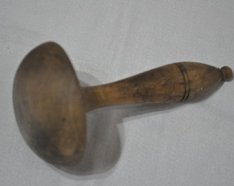
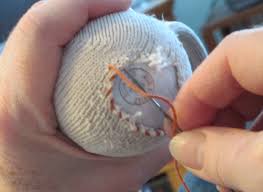
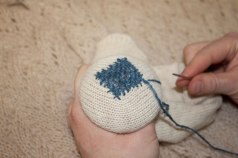
Even as recently as the seventies and eighties, I could still get small electrical items like kettles, radios and irons repaired at my local electrical repair shop. I once saw, in the eighties, an umbrella repair stall in a market in Cumbria. I doubt there are any of those anywhere here now.
People used to, and still can, buy new broom heads and handles, replace spade, shovel and hoe blades and handles. Although you can still buy decent brushes and brooms, there are many flimsier tools, with plastic handles and bristles, which just get thrown away when they have stopped being useful. There was a joke my dad used to tell;
‘This was my great-grandfather’s hoe. It’s had three new handles and four new blades.’

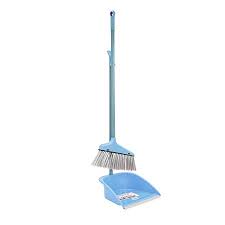
One long-lasting, repairable and biodegradable, one flimsy and disposable.
The term tinker from tinsmith or tinsmithing was originally assigned to those working with tin who mended pots and pans. The words “tyckner” or “tinkler” were used in medieval Scotland and England for a metal worker. The term transferred to travellers who earned their way going from town to town and mending as they went. These knife-grinders and tinkers used to repair farm and garden tools, household utensils, umbrellas and chairs. This is how gypsies came to be nicknamed tinkers.
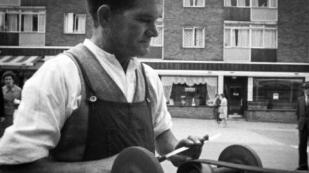
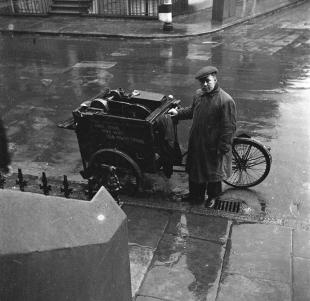
Knife-grinders from the around the 1950s.
There are several factors here. The first one is that things were made to last in the old days from robust materials and by craftsmen and were worth repairing. Most modern day socks would not be worth darning as the fabric they are made from is flimsier and would not support a darn. Also, goods are so much cheaper now (relative to earnings) and far more plentiful so that in many cases it would cost more to repair the item than to buy a new one – even if you could find anyone with the skills to do the repair. Umbrellas, for example. Who wants to pay for a repair when you can buy a new one for £2 – 5? Where would you find an umbrella repairer, anyway?
When my mum and dad bought their first house, in 1955, the people moving out left their vacuum cleaner for us as they said it was getting old and not worth moving. My mum used it for decades As far as I remember, I last saw it in a rented flat of my sister’s in the late 1970s and still in use. My mum had a Hoover man who used to come to the house to do the occasional repair. It was more or less exactly the same as the ones in the pictures and those are described as being from the 1930s. The black canvas bag had the slogan ‘It beats, as it sweeps, as it cleans’ emblazoned on it in white, exactly as shown in the photos below.
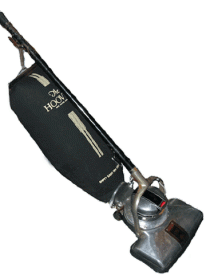
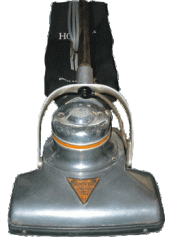
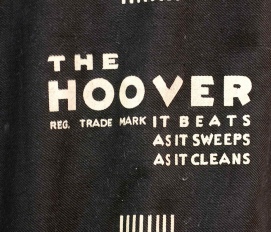
As usual, I credit Google images for my photographs. Anyone objecting to my use of an image can approach me directly and ask for it to be removed.
All you are remembering..is..as it was..out here in once rural Oregon, usa. Our 107 yr. old barn..has enough ‘stuff’..to actually..replace tool handles..from ‘old stock’..and a few new wood handle pieces..from the jerrys store..in springfield. Our old..wheel grinder..had been given away..in the late fiftys..but..a 70s metal grinding machine (electric)..is ..in place, and able to be..plugged in. The old..and the modern..live side by side here. We have enough ‘meltables’..and lead line..for making some patches..like the tinkers did. Do we have the skill/finess..that they did. No..we do not. 😉 ina puustinen-westerholm
LikeLiked by 2 people
Thank you so much for commenting. Your writing is always so interesting! You’re so right – many of the old skills do not exist any more. Why would you set up as an umbrella repairer, tinsmith, chair mender etc if everybody is just throwing away broken things and buying new?
LikeLiked by 1 person
My parents were of limited means when I was growing up, and it was very much “Make do and mend.” In our household in the ’60s, there were rants about “planned obsolescence” on a regular basis.
My mother taught me how to darn socks, which I did for several years when I was first married. I still have several darning eggs.
LikeLiked by 1 person
Ah, yes! I’d forgotten there were darning eggs as well. My mum’s was a mushroom so that’s what I looked up when I looked for a photo.
LikeLiked by 1 person
I’ve always mended things, though my darning skills leave a lot to be desired. And I have two darning mushrooms, so I’m spoilt for choice! Never heard of umbrella repair, could have done with that in my younger days with the number that blew inside out!
LikeLiked by 2 people
A heart warming post for me as I read through the list of items that were easily mended in the 60s & 70s😀 The long broom got me 😀 Nowadays we buy new ones to replace the old ones.
LikeLiked by 1 person
Thanks for reading and for commenting! Meryl
LikeLike
Do you remember invisible mending? That was a special skill whereby a darn was done with threads of the right colour and texture to match the original fabric. In the 1970s (I think) I saw a newspaper interview with a woman who was still doing it here in Wellington. I doubt if anyone does it now.
LikeLiked by 1 person
I remember seeing it advertised.
LikeLiked by 1 person
Yes, I do remember invisible mending. Many people don’t even mend now.
LikeLiked by 2 people